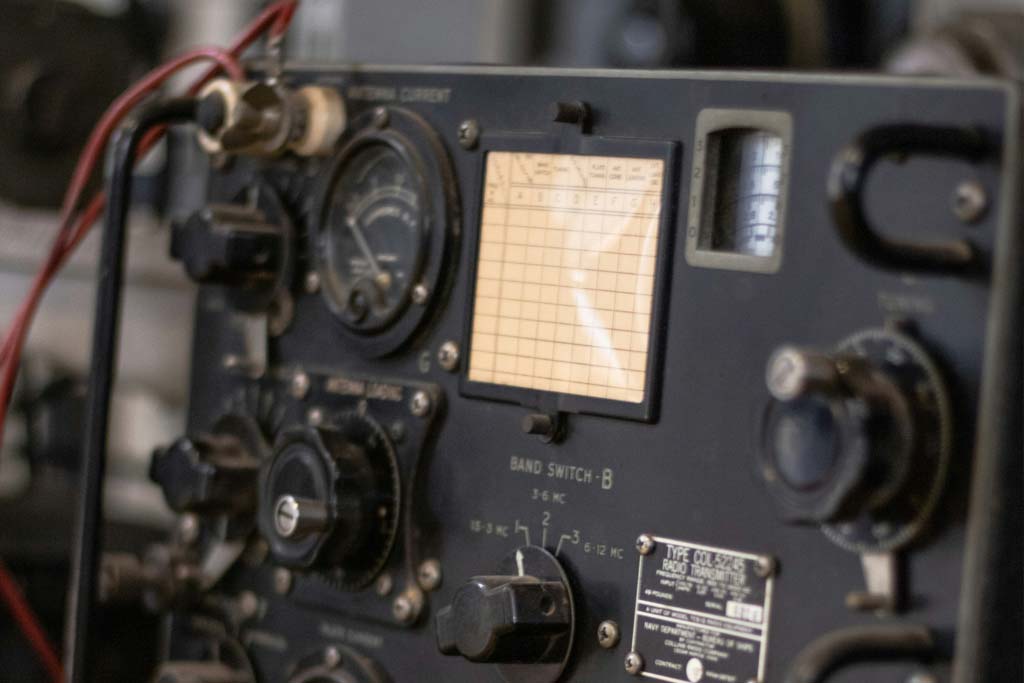Ham radio, also known as amateur radio, is a fascinating hobby and a vital service that allows individuals to communicate across the globe using radio waves. It’s a unique way for people to connect, experiment with technology, and provide public service, often stepping in when regular communication systems fail. From its origins in the early 1900s to its modern-day applications, ham radio has evolved into a global phenomenon, bringing together amateur radio enthusiasts of all income levels to share knowledge, provide emergency communications, and explore the radio spectrum. In this blog post, we’ll dive deep into what it is, how it works, its history, and its importance in today’s world.
The Basics
At its core, ham radio is a form of communication that uses radio frequencies to transmit and receive messages. Unlike cell phones or regular phones, which rely on centralized infrastructure, ham operators—also known as radio amateurs or ham operators—use their own equipment to send and receive radio signals. These signals can travel short distances for local communications or span international borders, connecting people in different areas of the world.
Ham radio communication isn’t limited to voice communications. Operators can use a variety of modes of communications, including morse code, digital signals, and single sideband (SSB) transmissions. Morse code, one of the oldest methods, remains popular among ham radio enthusiasts for its simplicity and reliability, especially in challenging conditions. Digital signals, on the other hand, allow for more modern forms of communication, such as sending text or images, while single sideband is often used for long-distance voice communications.
To operate a ham radio, individuals must obtain an amateur radio license from a governing body, such as the Federal Communications Commission (FCC) in the United States. The FCC regulates the amateur radio service, ensuring that operators adhere to international law and use the radio spectrum responsibly. There are different levels of licenses, including the technician class license, general class license, and extra class license, each granting access to more frequency bands and privileges.
A Brief History of HAM
The history of ham radio dates back to the early 1900s, when radio experimentation was in its infancy. Early pioneers, often regular people with a passion for technology, began tinkering with radio waves to see how far they could transmit signals. These early ham radio enthusiasts laid the groundwork for what would become a global hobby. In 1914, the American Radio Relay League (ARRL) was founded in the United States, becoming the first national association for amateur radio operators. The ARRL remains a key organization today, advocating for the ham radio community and providing resources for new hams.
By the 1920s, ham radio had grown significantly, with operators establishing important links across the country and even internationally. The hobby gained further prominence during World War II, when ham operators provided vital service by assisting with emergency communications. After the war, the hobby continued to expand, with technological advancement leading to more sophisticated ham radio equipment, such as handheld transceivers and mobile radios.
How it Works
Ham radio operates on specific frequency bands allocated by the FCC for amateur use. These bands range from low-frequency (LF) to ultra-high-frequency (UHF bands), each offering different capabilities. For example, lower frequencies are better for long-distance communication, while UHF bands are often used for local communications. Operators can adjust their equipment to transmit on different frequencies, depending on their needs.
A typical ham radio setup includes a transceiver (a device that both transmits and receives), a power supply, and an antenna. Antenna design is a critical aspect of ham radio, as it determines how effectively radio signals are sent and received. Some operators use base stations—fixed setups in their homes—while others prefer mobile stations or handheld transceivers for on-the-go communication.
The power output of a ham radio, measured in watts of power, also plays a role in its performance. A technician class license might limit an operator to a few watts, while an extra class license allows for higher power levels, enabling communication over greater distances. Frequency modulation (FM) is a common method used in ham radio, particularly on VHF and UHF bands, as it provides clear audio quality for local communication.
Licensing and Getting Started
To become a ham operator, you need to obtain a ham license, which requires passing an exam that tests your basic knowledge of radio technology and regulations. In the United States, the FCC oversees the licensing process, and there are three main levels of licenses: technician, general, and extra. The technician exam is the entry-level test, covering the basics of radio theory, regulations, and operating practices. As you progress to the general class license and extra class license, the exams become more challenging, requiring a deeper knowledge of radio theory and technical skills.
The license application requirements are straightforward. You’ll need to study for the exam—many operators join a local radio club or use resources from the ARRL to prepare—and then schedule a test with a volunteer examiner. Once you pass, you’ll be assigned a unique call sign, which identifies you on the air. For example, a call sign in the United States might look like “W4XYZ,” with the “W” indicating the country.
The Role of Ham Radio in Emergency Communications
One of the most significant contributions of ham radio is its role in emergency communications. When natural disasters like Hurricane Katrina strike, regular communication systems often fail, leaving communities isolated. Ham radio operators step in to provide a lifeline, relaying messages between emergency responders, weather stations, and affected areas. During Hurricane Katrina in 2005, ham operators in North Carolina and beyond played a crucial role in coordinating relief efforts, proving that ham radio is often the best way to maintain communication in emergency situations.
The ham radio community is well-prepared for such scenarios. Many operators participate in public service events and train for emergency communications through organizations like the ARRL. They often work alongside emergency services, providing a vital service when cell phones and other systems are down. In some cases, ham operators have even communicated with the International Space Station, demonstrating the versatility and reach of amateur radio.
Ham Radio vs. Other Communication Methods
Ham radio is often compared to other forms of communication, such as CB radios and regular phones. While CB radios are popular among truck drivers and long-haul truckers for short-range communication, they lack the range and flexibility of ham radio. CB radios operate on a limited set of frequencies and don’t require a license, but they’re not as reliable for long-distance or emergency communications.
Cell phones, while convenient, rely on infrastructure that can fail during natural disasters or in remote areas. Ham radio, on the other hand, operates independently, making it a more robust option in challenging conditions. Additionally, ham radio allows for technical experimentation, which isn’t possible with commercial devices like cell phones.
The Ham Radio Community
The ham radio community is diverse, encompassing people from all walks of life—movie stars, aircraft engineers, and regular people alike. American amateur radio operators, along with their counterparts in organizations like the Radio Society of Great Britain, form a global network of radio amateurs. They share a passion for radio experimentation and often participate in events like DX contests, where operators compete to contact as many distant stations as possible.
Community service is a core value of the ham radio community. Operators frequently volunteer their skills for public service events, such as marathons or disaster drills, and many are members of a local radio club where they can connect with other new hams and share knowledge. The ARRL and other national associations provide resources, publications, and events to support the community.
Technical Challenges and Experimentation
Ham radio isn’t just about communication—it’s also about technical challenges and innovation. Operators often build their own equipment, experiment with antenna design, and explore new modes of communications. For example, some hams use repeater stations to extend the range of their signals, while others focus on digital signals to send data over the air.
The hobby requires a certain level of technical skills, but you don’t need to be an expert to get started. A basic knowledge of radio technology is enough to pass the technician exam, and as you gain experience, you can tackle more advanced projects. Many operators enjoy the challenge of working with different frequencies and modes, such as single sideband or frequency modulation, to optimize their setups.
Equipment and Setup
Equipment varies widely depending on an operator’s needs and budget. A popular model for beginners might be a handheld transceiver, which is portable and easy to use. For more advanced setups, operators might invest in a base station with a high-powered transceiver, a robust power supply, and a custom antenna.
Mobile radios are another option, often used by operators who want to communicate while on the move. These setups are popular among long-haul truckers and others who need reliable communication on the road. Regardless of the setup, the key to success is understanding how to use the radio spectrum effectively and choosing the right equipment for the job.
Ham Radio in the Modern World
In today’s world of instant communication, you might wonder why ham radio is still relevant. The answer lies in its unique capabilities. Operators can communicate without relying on the internet or cell towers, making it an essential tool in areas where modern infrastructure isn’t available. It’s also a hobby that fosters technical skills and innovation, appealing to those who enjoy hands-on learning.
Moreover, ham radio continues to play a role in emergency situations, providing a backup when other systems fail. Its ability to connect people across international borders and in remote areas of the world ensures that it remains a valuable resource. Whether it’s a ham operator in North Carolina helping during a hurricane or an amateur in the UK contacting the International Space Station, ham radio proves its worth time and time again.
Getting Involved
If you’re interested in HAM, the first step is to get your amateur radio license. Start by studying for the technician exam, which covers the basics of operation. Resources like the ARRL’s study guides or a local radio club can help you prepare. Once you pass the exam and receive your call sign, you’ll be ready to join the ranks of ham radio operators.
From there, you can explore the many facets of the hobby. Try your hand at DX contests, experiment with digital signals, or get involved in emergency communications. The ham radio community is welcoming and eager to help new hams, so don’t hesitate to reach out for advice or mentorship.
Ham radio is more than just a hobby—it’s a unique way to connect with others, learn about technology, and serve your community. From its origins in the early 1900s to its modern-day applications, HAM has proven its value as a tool for communication, experimentation, and public service. Whether you’re a beginner with a technician class license or an experienced operator with an extra class license, there’s always something new to discover in the world of amateur radio. So why not take the plunge, get your ham license, and join the global network of HAM enthusiasts? You might just find that it’s the best way to explore the airwaves and make a difference in the world.
Photo by Sven Verweij on Unsplash
Related:


